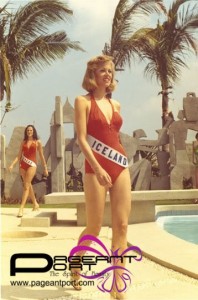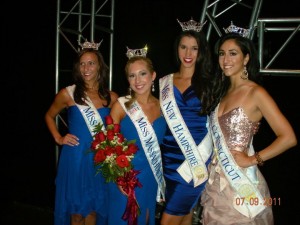To outsiders it might seem like there are lots of links between the world of child beauty pageants and the world of adult beauty pageants (which do not exclusively include the Miss America, Miss Universe, and Miss World systems, but those are certainly the most prestigious and well-known). But that isn't quite right. Lots of child beauty girls say that they want to grow up to be Miss America or Miss Universe, but they often drop-out long before they are age eligible. Or, they are seen as being "Pageant Patties" who are too programmed/robotic to succeed in the adult pageants that place more value on spontaneity and "natural"-ness, so those who stick with pageants over the years often aren't successful in their pursuit of the "big crowns." Outsiders also often wonder what becomes of child beauty pageant contestants as they age. Are they successful? Happy? Married? It's usually difficult to answer these questions as it's hard to track down contestants and keep track of them over the years. One exception are the two girls featured in the 1996 documentary Painted Babies. This BBC-produced special focused on five-year-olds Asia Mansour and Brooke Breedwell as they squared off in a Georgia child beauty pageant-- long before the world ever heard of JonBenet Ramsey. The filmmaker, Jane Treays, visited the girls again, twelve years late, in Painted Babies at 17, which came out in 2008 and was shown on TLC (FYI- Asia was still doing pageants).
But even before Painted Babies, there was Blaire Pancake. Blaire was eleven-years-old when she and her family were featured in a nine-page spread in Life in 1994 (click here for a link to my own copy of the piece, which unfortunately does not reproduce the pictures well; to read the text of the article, click here). Even with shocking revelations for the time—like the fact that Blaire had competed in over 100 pageants, that she wore glue-on nails, and that she had been accused of wearing hair extensions and having plastic surgery performed by her father (a plastic surgeon)—there was little public outcry about this American subculture.
I have always found this Life piece, by sports journalist Pat Jordan, quite powerful. If you read it now, seventeen years later, you'll be struck by how little has changed in many ways in the world of child beauty pageants. There's clearly continuity in the tensions and practices (flippers, coaches, rumors and accusations, involved parents, etc.). And then there is the memorable Blaire Pancake. The images of her are striking, and the name, for me, has always been unforgettable.
Recently Bloomberg Businessweek ran a story on US beauty queens who have gone on to pursue MBAs. They tracked down 14 state title holders from Miss America and Miss USA who had worn the crown in the past decade. The article highlights how the women's experiences as state beauty queens helped prepare them for the business world, highlighting networking and marketing skills.
Well, guess who number 12 was in the slideshow that accompanied the article? You guessed it-- Blaire Pancake. Pancake competed as Miss Tennessee in the 2007 Miss America Pageant. While she didn't place in the Top 15, or win any special awards, she did compete at the Miss America Pageant, which is no easy feat. True, she didn't fulfill her stated childhood dream of becoming Miss America (per the Life piece from 1994), but she got pretty close.
Pancake apparently stopped doing pageants in high school, and didn't compete in college. But at 23, at risk of "aging out" of the Miss America system, she decided to try for the Miss Tennessee title. And she won on her first attempt. All those years of pageant prep had paid off.
I was really delighted to read about Blaire Pancake's success. She received her MBA in 2009 and is now working as a "marketing and business development director." A quick Google search revealed that she is married as well. While Blaire Pancake (thankfully) never become a household pageant name like JonBenet, she does show that even child beauty pageant contestants thrust into the national spotlight at a young age can go on to lead successful adult lives. So, there is hope for girls like Swan Brooner (from HBO's critically acclaimed 2001 Living Dolls [and my favorite child beauty pageant documentary]) and for the pint-sized princesses from today's Toddlers & Tiaras. Only time will tell if they can pull off a Blaire Pancake.





